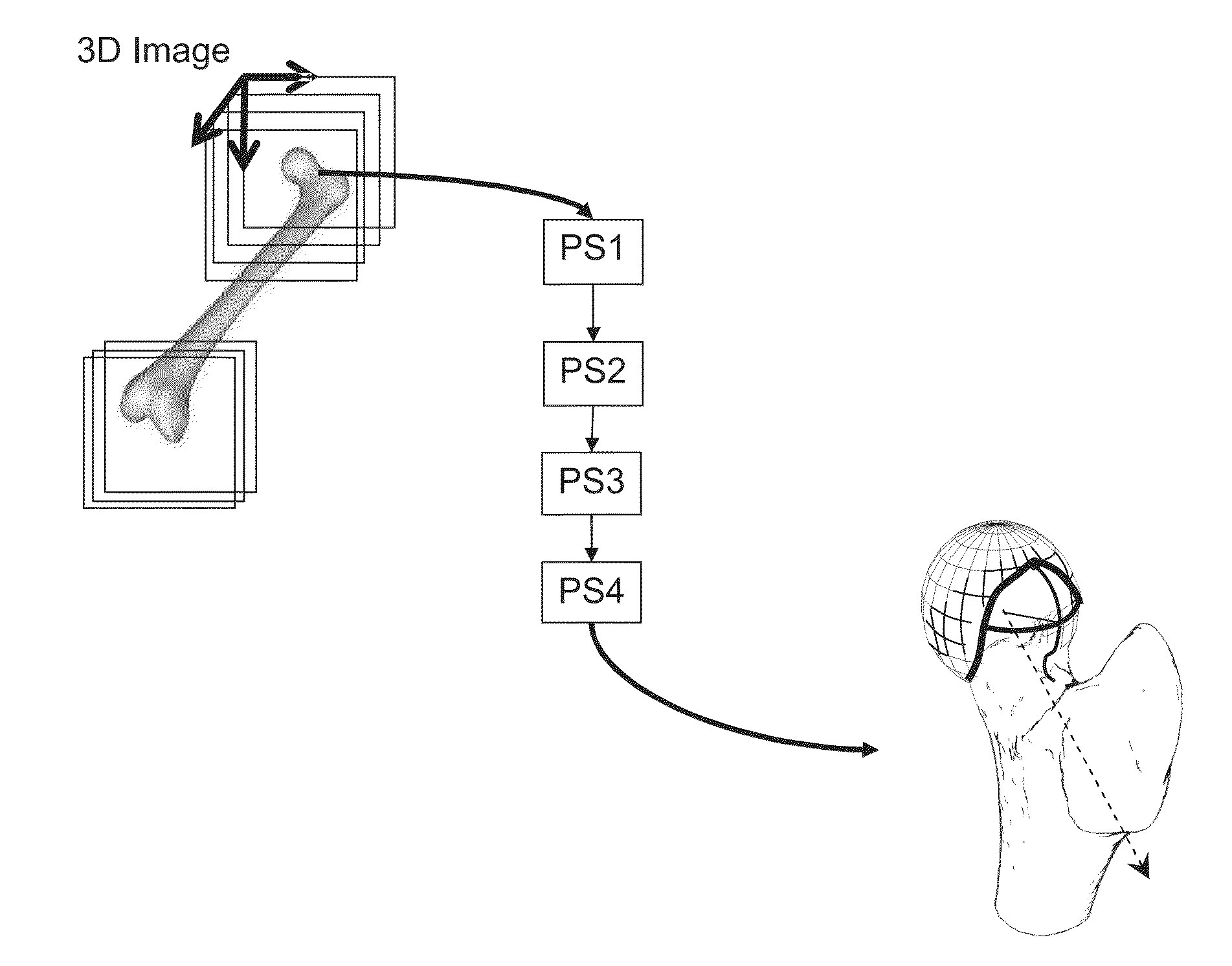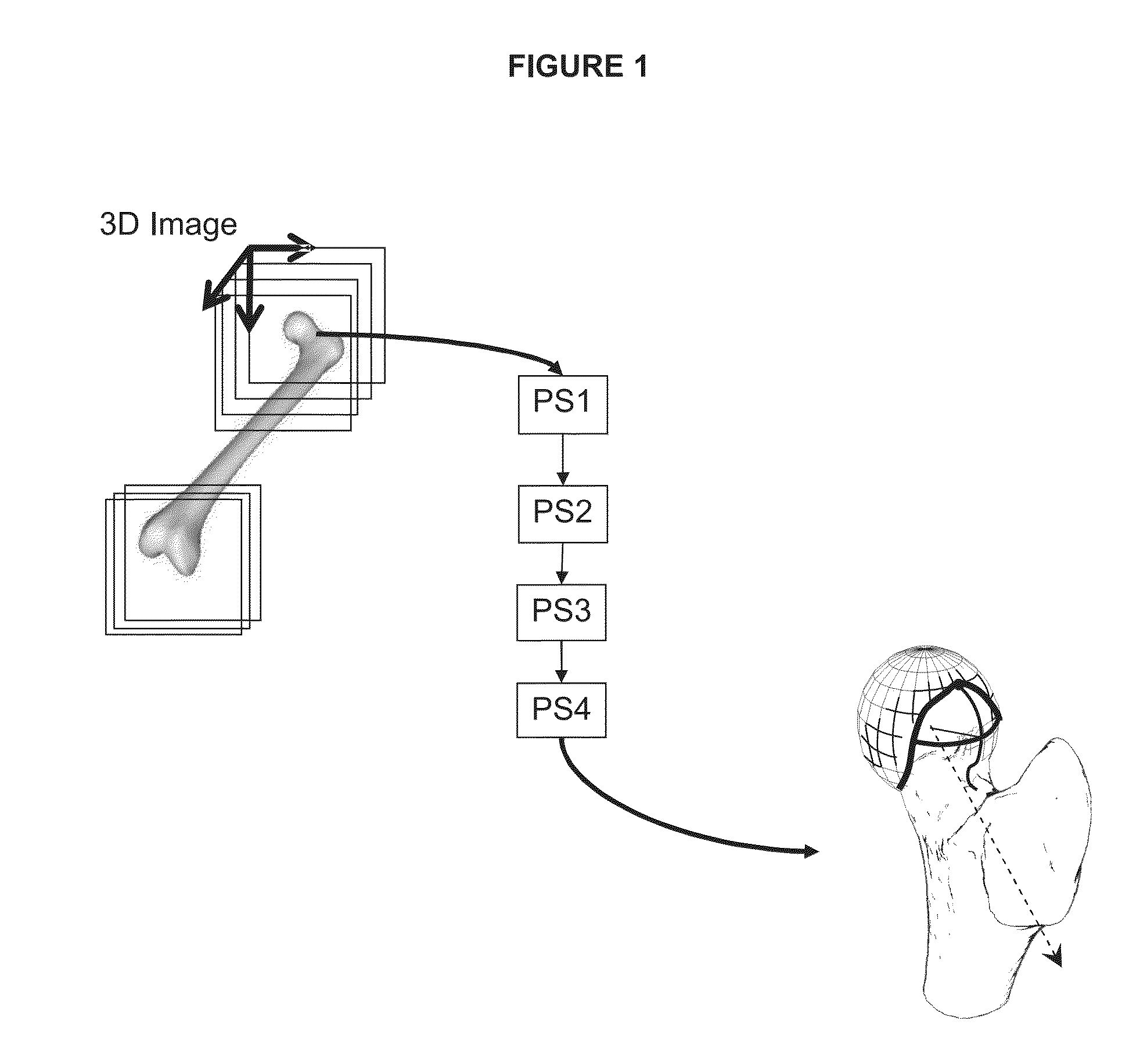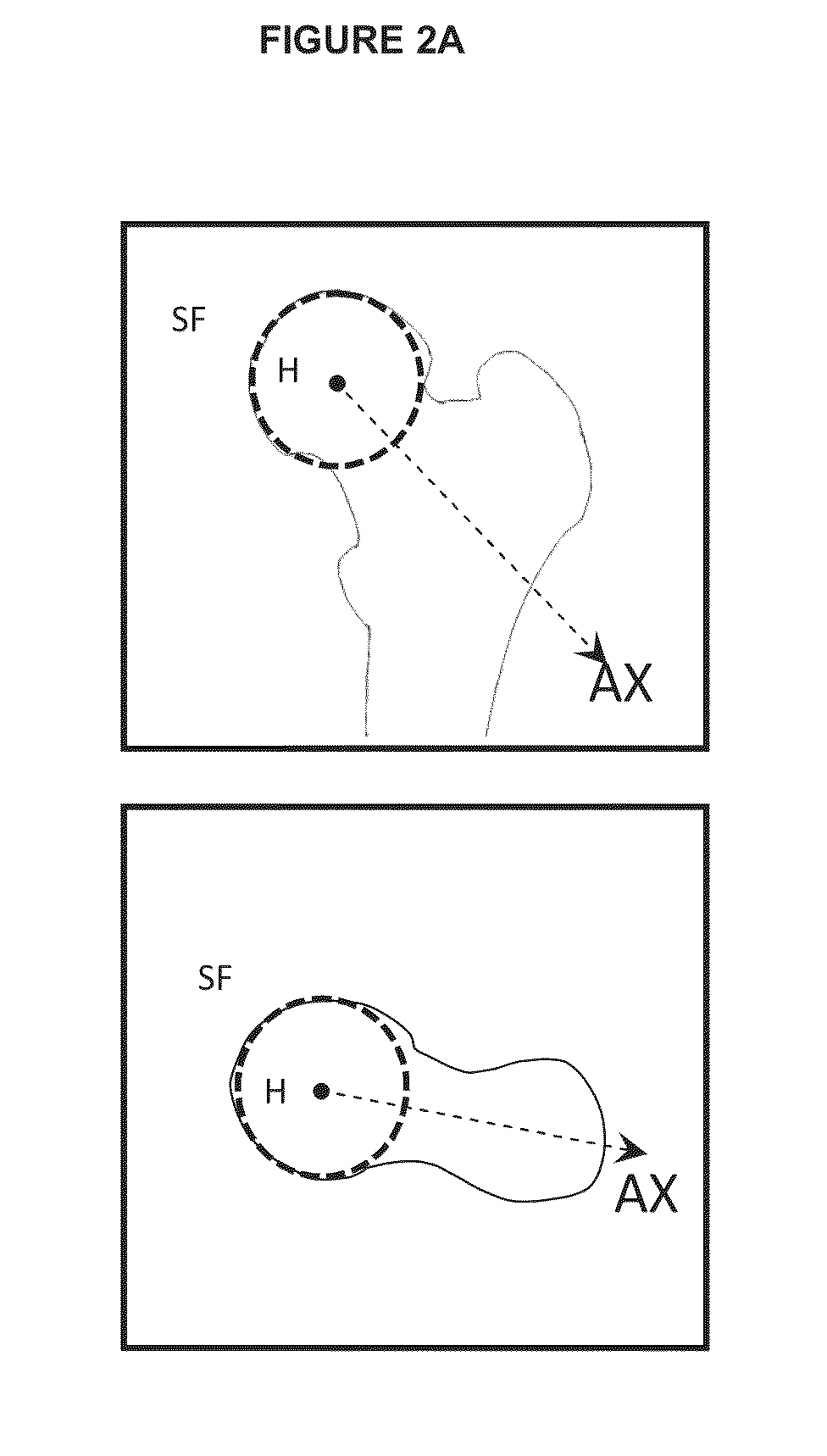Method for determining bone resection on a deformed bone surface from few parameters
a bone resection and articulation surface technology, applied in the field of computer assisted surgery, can solve the problems of difficult to determine the correct and full diagnosis of the pathology, the repetitive impact of the proximal femoral neck on the human body, and the complex structure of the human body
- Summary
- Abstract
- Description
- Claims
- Application Information
AI Technical Summary
Benefits of technology
Problems solved by technology
Method used
Image
Examples
Embodiment Construction
:
[0087]The method described hereafter provides a precise and reproducible process to determine from 3D medical image of the bone, a correction of a bone deformation at the head-neck junction of the bone, with a limited number of parameters, enabling an individual adjustment of the correction boundary and corrected shape.
[0088]In reference to the drawings, a method for non-invasive determination of parameters defining a boundary and a corrected surface from a resection of a deformed surface of a bone is hereafter described. The resection of a deformed surface of the bone is used for correction of an articulation condition.
[0089]In the following description, the method is described with reference to the hip articulation. Thus, the method will be used for defining a resection of a bump overgrowth deformed surface on the femur head neck junction. However, the invention is not limited to the application to the femur but can be used for defining a resection of a deformed surface of any ar...
PUM
 Login to View More
Login to View More Abstract
Description
Claims
Application Information
 Login to View More
Login to View More - R&D
- Intellectual Property
- Life Sciences
- Materials
- Tech Scout
- Unparalleled Data Quality
- Higher Quality Content
- 60% Fewer Hallucinations
Browse by: Latest US Patents, China's latest patents, Technical Efficacy Thesaurus, Application Domain, Technology Topic, Popular Technical Reports.
© 2025 PatSnap. All rights reserved.Legal|Privacy policy|Modern Slavery Act Transparency Statement|Sitemap|About US| Contact US: help@patsnap.com



